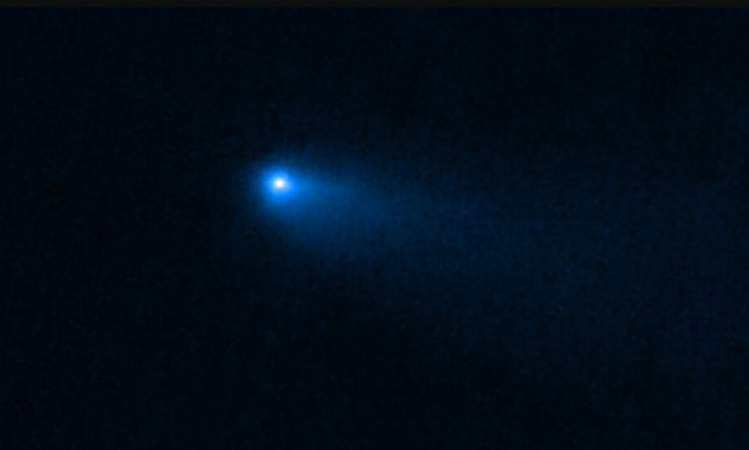
USA: Water has been discovered around a rare comet that is located in the main asteroid belt between Jupiter and Mars by the James Webb Space Telescope (JWST). The powerful space observatory has made yet another significant scientific discovery with this finding.
It had never before been discovered that a comet in the main asteroid belt was surrounded by gas, particularly water vapour. Scientists are baffled by the discovery, though. Here is why, shall we?
Scientists can now peer further into the cosmos than ever before because of Webb's infrared capabilities. The most recent discovery is significant and perplexing at the same time.
Also Read: Returning to the West Pacific for live-fire training are Chinese warships
The fact that the discovery suggests that water from the early solar system may have been preserved as ice in the main asteroid belt is one of the factors that makes it significant.
The investigation of the comet, designated 238P/Read, also reveals water vapour, but it also raises a mystery. Comet 238P/Read does not contain carbon dioxide, contrary to other comets, which was something scientists had anticipated finding. A comet's volatile material typically contains about 10% carbon dioxide, which is easily vaporised by the Sun's heat.
Also Read: Local authorities report a minimum 41 cyclone fatalities in Rakhine, Myanmar
Comet 238P/Read lacks carbon dioxide for two conceivable causes.
It is possible that Comet 238P/Read had carbon dioxide during its formation but lost it as a result of the Sun's warming of the planet's surface. The alternative explanation proposes that the comet may have formed in a "particularly warm pocket of the solar system," where carbon dioxide was not present.
Along with hosting asteroids, the main belt asteroid also harbours comets like 238P/Read. According to a blog post by NASA, the term "main belt comets" is relatively new, and Comet 238P/Read was one of the original three comets used to create the category. These celestial objects are renowned for exhibiting a comet-like tail and halo of material known as the coma.
The coma and tail of a comet are made of frozen material that becomes gas as they get closer to the Sun. The Kuiper Belt and Oort Cloud, which are located at the edge of the solar system beyond Neptune's orbit, are thought to be the origin of comets. These places would enable the protection of cometary icy material from solar radiation.
The "warmer asteroid belt," which is located inside Jupiter's orbit, was another area where scientists thought water ice might be preserved, but there was no concrete proof until Webb's most recent discoveries.
Also Read: Kuwaiti military office chief's residence at the embassy in Khartoum was raided and vandalised
"In previous years, there have been objects in the primary region with all the characteristics of comets, but only with this precise spectrum data from the Webb telescope can we say yes, it's definitely water ice that's creating that effect," said Michael Kelley, the corresponding author of the study.
Webb's findings "prove that water ice from the beginning of the solar system can be preserved in the asteroid belt."
Researchers hope to expand their investigation beyond Comet 238P/Read to see if other main belt comets have similar compositions. Surprisingly, the team hopes to return samples from these comets via future missions.